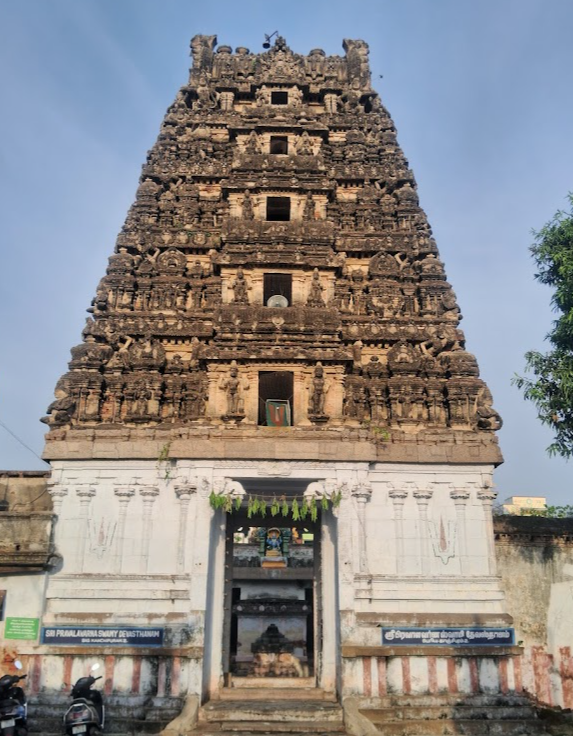The temples of Pacchai Vannar and Pavala Vannar in Kanchipuram are deeply intertwined in their significance. It is believed that devotees must worship both Pacchai Vannar Perumal and Pavala Vannar Perumal together, without omitting either one. Despite the fact that Mangalasasanam, the hymns of praise by the Alvars, was not specifically performed for the Pachai Vannar Sannadhi, both temples are collectively regarded as a single Divya Desam. Therefore, they are to be worshipped as one unified sacred site.
Pacchai Vannar, also known as "Maragatha Vannar," is considered to be an embodiment (hamsa) of Lord Shiva, while Pavala Vannar is seen as an embodiment of Parashakti. This unique association suggests that by worshipping at these two temples together, devotees are simultaneously offering their reverence to both Lord Shiva and Parashakti.
According to legend, Bhrigu Maharishi and Goddess Parvati worshipped Lord Vishnu at this sacred site. Thirumangai Alwar's verses in his "Thirunedunthandakam," where he refers to Vishnu as Pavalavanna and Kachhi Oora, have played a significant role in classifying this temple as one of the 108 Divya Desams.
The temple is also connected to the legend of Tiruvekka and Lord Brahma's ritual sacrifice, further enhancing its spiritual importance and the rich tapestry of mythology that surrounds it.
Legends :
According to legend, a conversation took place between Lord Vishnu (Thirumal) and his consort, Thirumagal (Lakshmi), in Vaikundam. During this conversation, Thirumagal expressed her desire for the Lord to change his dark complexion (Karvarnam) to a golden hue by seeking the grace of Lord Shiva, who is responsible for the threefold duties of creation, preservation, and destruction.
Agreeing to her request, Lord Vishnu descended to the Kanchi shrine. There, He created a sacred water body, known as the Chakra Theertham, using His chakra weapon. Every day, He bathed in this holy water and worshipped Lord Shiva, who is revered as Veerattakasar, with 14,000 lotus flowers.
Pleased by Lord Vishnu's devotion, Lord Shiva appeared before Him along with Uma Devi (Parvati) and granted His wish to change His complexion from dark to golden. As a result, in this temple, Lord Vishnu is depicted with a golden hue, symbolising the divine transformation.
